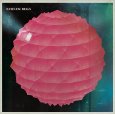Listviews can be used together with the collapsible widget. The framework makes them exactly fit inside the generated content container of the collapsible. If a data-content-theme has been set (which adds a border to the content container), the framework removes the bottom border of the last list item and adjusts its corner styling.
Inset, individual collapsible
This is an example of a listview wrapped in a container with data-role="collapsible".
Choose a car model...
Inset, collapsible set
You can also use listviews inside a collapsible set (accordion) to visually group the list and ensure that only a single item can be open at once. The example below shows a collapsible set with various listviews inside.
Filtered list
Formatted text
- Friday, October 8, 2010 2
-
Stephen Weber
You've been invited to a meeting at Filament Group in Boston, MA
Hey Stephen, if you're available at 10am tomorrow, we've got a meeting with the jQuery team.
6:24PM
-
jQuery Team
Boston Conference Planning
In preparation for the upcoming conference in Boston, we need to start gathering a list of sponsors and speakers.
9:18AM
Thumbnails and split button
Non-inset, collapsible set
Setting data-inset="false" on a collapsible or a collapsible set makes the collapsible full width (non-inset), like a full width listview.
Calendar
- Friday, October 8, 2010 2
-
Stephen Weber
You've been invited to a meeting at Filament Group in Boston, MA
Hey Stephen, if you're available at 10am tomorrow, we've got a meeting with the jQuery team.
6:24PM
-
jQuery Team
Boston Conference Planning
In preparation for the upcoming conference in Boston, we need to start gathering a list of sponsors and speakers.
9:18AM
- Thursday, October 7, 2010 1
-
Avery Walker
Re: Dinner Tonight
Sure, let's plan on meeting at Highland Kitchen at 8:00 tonight. Can't wait!
4:48PM
- Wednesday, October 6, 2010 3
-
Amazon.com
4-for-3 Books for Kids
As someone who has purchased children's books from our 4-for-3 Store, you may be interested in these featured books.
12:47PM
Non-inset, individual collapsibles
This is an example of a series of individual collapsibles that are full width (non-inset) with listviews inside. Multiple collapsible rows can be open at once since each is an individual collapsible. Here, each collapsible also has a custom icon.
To avoid "double" borders the framework removes the top border of collapsibles that are immediately preceded by another collapsible. To negate this you can add the following rule to your custom CSS:
.ui-collapsible .ui-collapsible-heading .ui-btn { border-top-width: 1px !important; }More in this section
- Listviews
- List basics & API
- Basic linked list
- Nested list
- Numbered list
- Split button list
- List dividers
- Autodividers
- Count bubble
- Thumbnails
- Icons
- List formatting
- Inset styled lists
- Search filter bar
- Inset search filter bar
- Search filter with dividers
- Search filter hidden data
- Read-only lists
- Read-only inset lists
- Lists with forms
- Inset lists with forms
- Collapsible lists
- List performance test
- Theming lists


